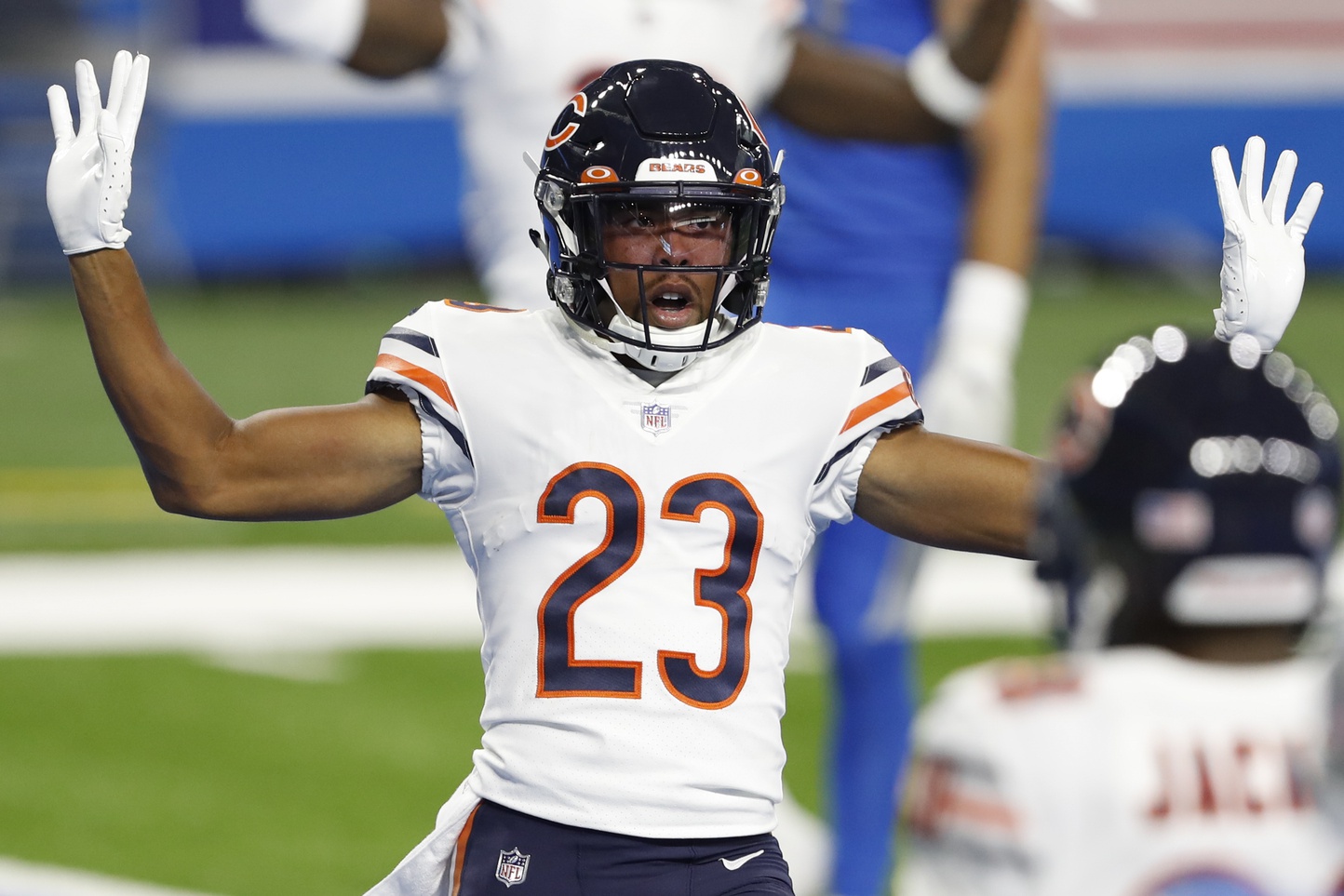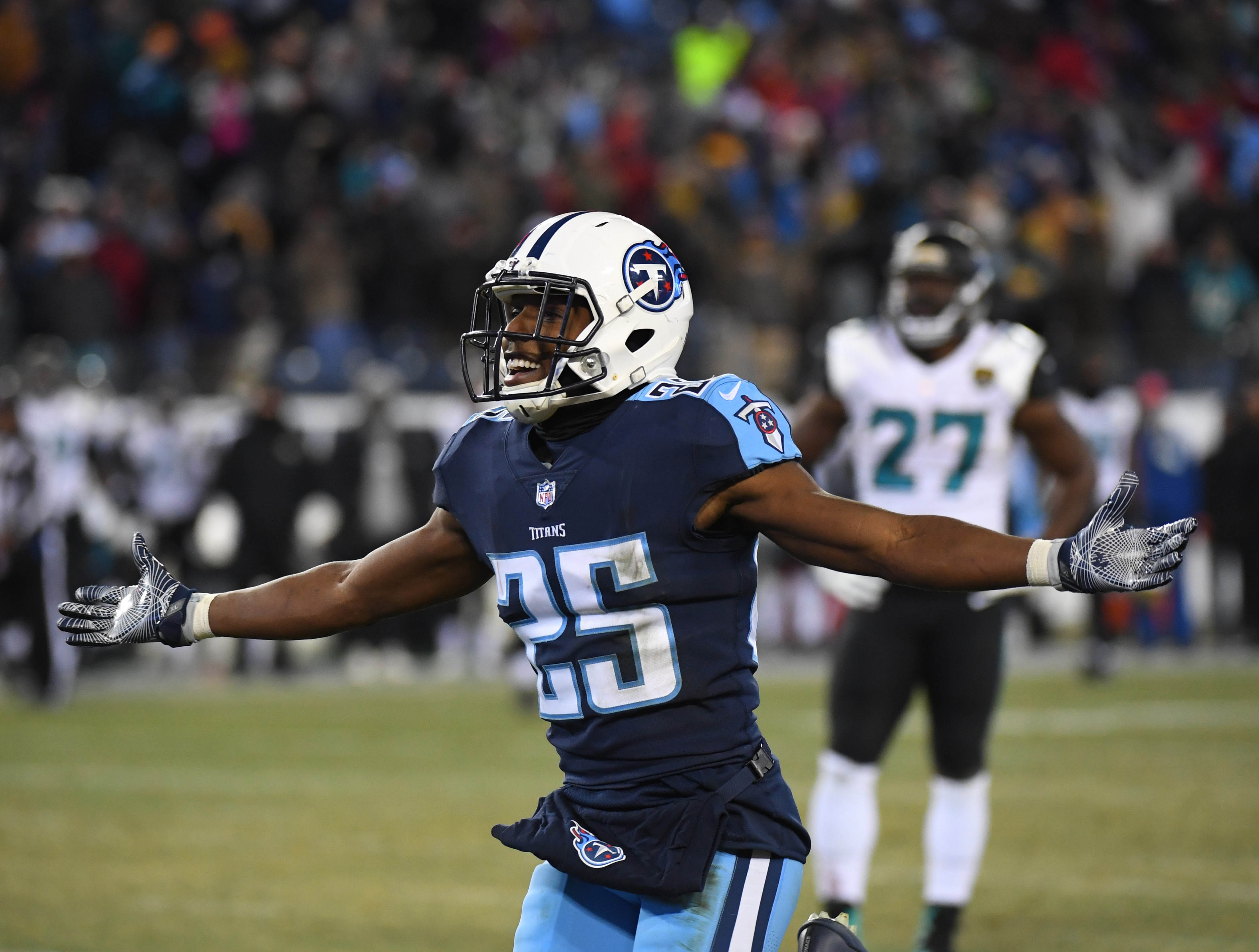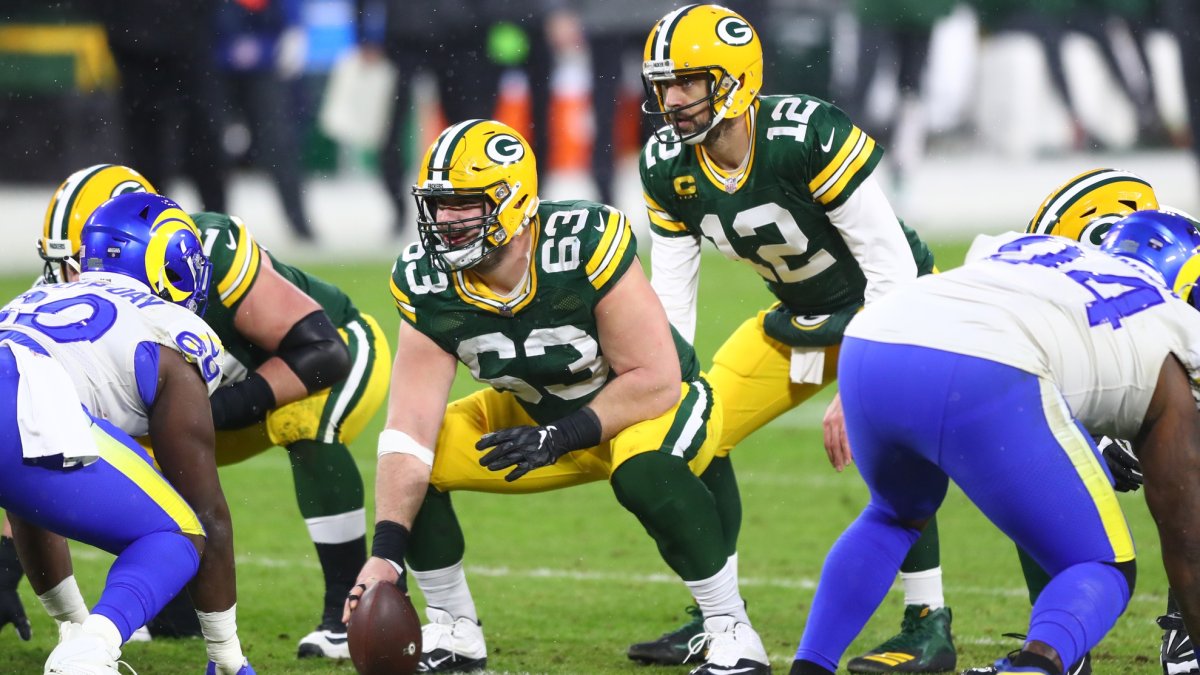Free agency is the time to attack areas of need, while the draft is for value.
All 32 NFL teams entered 2021 free agency with holes on their roster, whether it stemmed from prior poor roster construction, cap casualties or impending free agents who walked away. Some teams plugged those weak spots with home-run signings to turn weaknesses into strengths, while others ignored their flaws or made questionable signings in meager attempts to address them.
Below are some of the most notable positional unit improvements across the league in free agency along with some of the groups that managed to end up in worse shape than before.
MOST IMPROVED
Los Angeles Chargers: Offensive line
Notable additions: C Corey Linsley, G/T Matt Feiler, G Oday Aboushi
Notable subtractions: G Trai Turner, C Dan Feeney, G Forrest Lamp, T Sam Tevi
Los Angeles trotted out eight different offensive line combinations in 2020, tying for the third-most in the NFL. And every one of those groupings performed poorly. The Chargers' offensive line combined for a 48.6 PFF grade in 2020. Not only was that the worst mark of any team last year, but it also was the second-worst we have seen in the past decade.
Most rookie quarterbacks would have struggled with that kind of protection, but reigning NFL Rookie of the Year Justin Herbert obviously prevailed. He = led all quarterbacks in passing grade when under pressure, and Los Angeles had the third-most efficient offense on pressured plays in the past 15 years.
That said, quarterback performance under pressure is extremely volatile from year to year, meaning it is highly unlikely that Herbert sustains that level of play in 2021. The Chargers had to make some moves to bolster their pass protection for Herbert in Year 2, and they did just that.
Los Angeles signs former Green Bay Packers center Corey Linsley to a deal that made him the highest-paid player at the position on an annual basis. Considering he was the highest-graded center in the NFL last season, this was well deserved. The Chargers’ 2020 center, Dan Feeney, was the second-lowest-graded player at the position. Talk about a turnaround.
Along with Linsley, general manager Tom Telesco secured former Pittsburgh Steeler Matt Feiler, who has proven to be more than capable of playing at guard or tackle. After playing just 750 snaps through his first five years in the professional ranks, he finally started a full season at right tackle in 2019 and finished with the fifth-best pass-blocking grade at the position. He then kicked inside to left guard for the 2020 season, where he ranked 12th in passing block grade.
This Chargers offensive line has the potential to be a top-10 unit in 2021 with Linsley at center, Feiler at left guard, a healthy Bryan Bulaga at right tackle and a rookie — such as Rashawn Slater — at left tackle.
Cleveland Browns: Secondary
Notable additions: S John Johnson III, CB Troy Hill
Notable subtractions: CB Terrance Mitchell, CB Kevin Johnson, S Karl Joseph, S Andrew Sendejo
Cleveland’s secondary was the Achilles' heel of the team's 2020 season, which saw the Browns win their first playoff game this century. Cleveland ranked 22nd among the 32 defenses in expected points added (EPA) per pass allowed, and the secondary ranked 27th in combined coverage grade. Aside from outside corner Denzel Ward, there weren't a lot of positive performances among the group.
The Browns, however, clearly recognized this issue, and they attacked it in free agency. They are one of the smartest teams in the league, understanding that coverage is more valuable than pass rush. And they threw the bag at two of the top defensive backs on the market — safety John Johnson III and slot cornerback Troy Hill — instead of paying an overrated edge defender with inflated sack totals like Tennessee did.
Johnson and Hill both come over from the Los Angeles Rams and should be considered among the best players at their respective positions. Serving as the signal-caller for the Rams’ No. 1-ranked defense in 2020, Johnson finished the year as one of the five most valuable defensive players in the entire league, according to PFF Wins Above Replacement (WAR). He can plug into any scheme in any role and perform at a high level.
Hill plays the most undervalued position on the field, ranking first in coverage grade from the slot over the past couple of seasons.
The additions of Johnson and Hill to play with Ward and a hopefully healthy Grant Delpit could make this Cleveland secondary go from one of the worst to one of the best. And if the Browns were to make a big splash trade for a cornerback to start opposite Ward, such as Stephon Gilmore, they’d be in the running to field the NFL's best secondary.
Denver Broncos: Cornerback room
Notable additions: CB Kyle Fuller, CB Ronald Darby
Notable subtractions: CB A.J. Bouye
Denver's safeties showed out last season, but their cornerback room outside of Bryce Callahan held the secondary back. Callahan, who played both on the outside and in the slot, was the third-highest-graded cornerback in coverage last year, and yet, the Broncos' cornerback room ranked just 22nd among the 32 units in coverage grade. Former standout Jacksonville Jaguar A.J. Bouye struggled in his short time on the field in Vic Fangio’s scheme, posting a 52.4 coverage grade, and he was subsequently released after the season.

The Broncos made a move right out of the gate in free agency to address the issue, signing Ronald Darby. He was one of the most productive cornerbacks in the league this past season for the Washington Football Team, racking up 17 forced incompletions. That tied with James Bradberry for the most at the position. In single coverage, Darby joined Callahan as one of the five highest-graded corners.
As good as Darby's signing was by Fangio and new general manager George Paton, the move of the week was swooping in and grabbing Kyle Fuller following his release from the Chicago Bears. Fuller was once a Fangio disciple in the Windy City, and he enjoyed easily the best years of his NFL career in the Denver head coach’s system. In 2017 and 2018, Fangio’s final two seasons as Chicago’s defensive coordinator, Fuller was one of the five highest-graded outside cornerbacks in the NFL and led the group in total plays made on the ball (41).
Darby and Fuller on the outside with Callahan in the slot alongside Justin Simmons, who is the second-most valuable safety since 2019, form a group that’s going to put the clamps on a lot of passing offenses.
New York Giants: Receiving unit
Notable additions: WR Kenny Golladay, TE Kyle Rudolph
Notable subtractions: WR Golden Tate
Daniel Jones showed modest growth from a passing perspective in 2020, ranking 12th in clean-pocket passing grade and third on throws over 20 yards downfield. However, he still had one of the worst receiving units in the league, as New York's team grade ranked 25th in that facet. While Jones still made plenty of mistakes in 2020 and has areas to work on, such as his pocket awareness, his receiving unit was hard to win with and played a part in the team ranking 28th in passing efficiency last year.
To help fix the lackluster set of receiving weapons, the Giants secured Kenny Golladay, our No. 4-ranked free agent this offseason.
Before his injury-riddled 2020 campaign, Golladay established himself as one of the NFL's best deep threats and contested-catch specialists. In 2018 and 2019 combined, he racked up the third-most deep (20-plus-yard target) receiving yards, with 930, and he tied for first in contested catches, with 43.
Kyle Rudolph is a fine addition for New York; he’s a plus receiver at the position on a relatively cheap deal paying him $6 million per year. Over the past four years, Rudolph ranks eighth at the position in WAR generated, 11th in receiving grade and first in drop rate (1%, 2.2% better than second). He won't be a true game-changer like Golladay, but he will be a great red-zone target and a more effective tight end than Evan Engram.
Even with Rudolph and Golladay joining Daniel Jones’ receiving arsenal, don't rule out the Giants taking another weapon with the No. 11 overall pick in the 2021 NFL Draft. If speedster Jaylen Waddle were to fall to the Giants, they shouldn't think twice. Waddle playing in the slot with Golladay on the outside would be a nightmare to defend.
MOST UNIMPROVED
Detroit Lions: Receiving unit
Notable additions: WR Tyrell Williams, WR Breshad Perriman
Notable subtractions: WR Kenny Golladay, WR Marvin Jones Jr., WR Danny Amendola
Detroit lost its top three wide receivers in free agency and supplanted them with Tyrell Williams and Breshad Perriman. They will join forces with Quintez Cephus and Geronimo Allison to form the Lions' wide receiver room for 2021 — assuming they don’t address the position at No. 7 overall in the 2021 NFL Draft. If they stay put, it might just be the worst wide receiver group in the NFL.
Williams didn’t play a down in 2020 due to a season-ending injury, and prior to that, he endured a three-year stretch where he was one of the 10 lowest-graded receivers in the league.
Perriman is one of the most inconsistent players at the position. He’s now on his fifth team in five years and has season grades on his profile as low as 44.4 (2017 with Baltimore) and as high as 72.8 (2019 with Tampa Bay). Since he entered the league in 2016, Perriman ranks 66th among 72 qualifying wide receivers in receiving grade. He is big in stature but struggles in contested scenarios, and he isn’t going to negate that with any sort of separation ability.
Carolina Panthers: Offensive line
Notable additions: T Cam Erving, G Pat Elflein, T Taylor Moton (retained)
Notable subtractions: T Russell Okung, G John Miller, G Chris Reed
Despite the Panthers' offensive line featuring here as “unimproved,” retaining right tackle Taylor Moton was the correct decision. Since earning a starting spot in his sophomore NFL season in 2018, Moton ranks second among all right tackles in pass-block grade.
It also was the right decision to let starters Russell Okung, John Miller and Chris Reed walk away. Okung has struggled to stay on the field as of late, and Miller and Reed have consistently been below-average guards throughout their NFL careers. Just this past season, Reed ranked 21st among left guards in PFF grade, while Miller ranked 27th among right guards.
Carolina incorrectly went about replacing them, though. Cam Erving, who signed for $10 million over two years with $8 million guaranteed, has featured all across the line in his six NFL seasons but has yet to show quality play. Among 141 offensive linemen to play over 3,000 snaps since 2015, the former first-round pick's 41.6 PFF grade ranks dead last by over eight grading points.
Elflein played all along the interior in his four years with the Minnesota Vikings and consistently struggled in pass protection. He comes in last among all offensive linemen in pass-block grade over the past four years. Yet, he received a three-year, $13.5 million contract with $6 million guaranteed.
Carolina's signal-caller, whomever it may be, is currently set up to endure one of the worst offensive lines in the NFL.
Tennessee Titans: Secondary
Notable additions: CB Janoris Jenkins, CB Kevin Johnson
Notable subtractions: CB Adoree’ Jackson, CB Malcolm Butler, CB Desmond King II, S Kenny Vaccaro
Tennessee overhauled its secondary this offseason. Cutting safety Kenny Vaccaro was the right move; his performance clearly wasn’t matching his pay, as his PFF grade ranked just 47th among 57 qualifying safeties in his three years as a Titan. Letting Desmond King II walk in free agency while also cutting Adoree’ Jackson and Malcolm Butler were questionable decisions, though.

King didn't perform up to his standards in his limited time with Tennessee, but his past play should’ve resulted in Tennessee retaining him. Since entering the league in 2017, King owns the highest slot coverage grade. Free-agent signee Kevin Johnson is likely to take over the slot for the Titans, and he is coming off a season in which he ranked 39th of 40 qualifiers in slot coverage grade (King still ranked 17th in his down season).
Had Tennessee just cut Butler, the team probably wouldn’t have landed on this list. The decision to cut both him and Adoree’ Jackson pushed the Titans over the hump. When healthy, Jackson is one of the top outside corners in the game. He ranks inside the top 10 in outside coverage grade ever since his rookie campaign. Despite just two career interceptions, Jackson has made some great plays on the ball. Prior to an injury-plagued 2020, he racked up the ninth-most pass breakups from 2017 through 2019, with 24.
To replace the outside starting spots, Tennessee is likely to count on nine-year veteran Janoris Jenkins and 2020 second-rounder Kristian Fulton. Jenkins performed admirably at outside corner for the Saints in 2020, ranking 12th among 78 qualifiers in outside coverage grade. The downside with him is that his performance in press-man is slipping, which is expected given he will turn 33 next season.
Fulton was a PFF favorite coming out of LSU last offseason. He was our CB2 in the class after shutting down his side of the field, earning coverage grades of 89.7 and 86.9 in his last two college seasons. Still, there’s some risk in trusting him given his lack of experience (just 68 snaps at outside corner as a rookie).
There’s no one to count on after Fulton and Jenkins. The Titans desperately need those two to play at a high level if they want a shot at making some noise in 2021. Their coverage unit performed poorly in 2020, ranking 28th in EPA per pass allowed, and they are in danger of repeating that next season.
Las Vegas Raiders: Offensive line and secondary
Notable additions: C Nick Martin, OL Denzelle Good (retained)
Notable subtractions: C Rodney Hudson, G Gabe Jackson, T Trent Brown, S Lamarcus Joyner
The Raiders' free agency decisions were truly head-scratching. They didn’t address their subpar secondary, they parted ways with three of their key offensive linemen and they used what significant money they had to pay running back Kenyan Drake and edge defender Yannick Ngakoue.
Three of the five starting spots along their offensive line are set in stone — left tackle Kolton Miller, left guard Richie Incognito and right guard Denzelle Good — but the other two spots are huge question marks. Plus, some of those starters carry baggage. Miller has shown incredible growth throughout his young NFL career, raising his 52.7 pass-block grade as a rookie in 2018 to 68.4 in 2019 to 81.3 in 2020 (11th among LTs).
He’s the one the Raiders can count on. As for Incognito and Good, not so much.
Incognito will turn 38 this summer and is coming off a season-ending injury that he suffered in just the second game of the year. It’s a massive bet by Las Vegas to count on him to reclaim his standout play from 2019, when he ranked second among guards in pass-block grade. Meanwhile, Good hasn’t consistently displayed quality level play throughout his NFL career. His 958 snaps in 2020 marked a career-high (previous high was 605 snaps), and he finished the season with a 56.7 PFF grade.
Las Vegas' secondary was supposed to be the team's primary focus in free agency, but that couldn’t have been further from the case. Ever since Jon Gruden took over as head coach in 2018, the Raiders have had one of the worst, if not the worst, secondaries in the league. Their 40.4 coverage grade over that span ranks dead last among the 32 defenses.
The Raiders did cut Lamarcus Joyner, who they played out of position from the slot, where he was the lowest-graded player in coverage since 2019, but made no upgrades across the board. There are still some veteran options on the market, but at this rate, it’s looking like Las Vegas will enter 2021 with a bottom-tier group once again.



 © 2025 PFF - all rights reserved.
© 2025 PFF - all rights reserved.